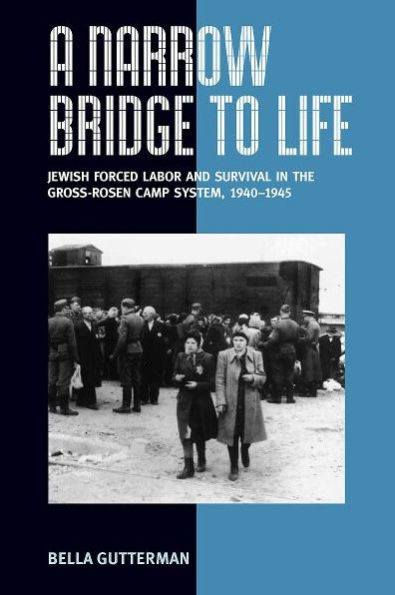A Narrow Bridge to Life: Jewish Forced Labor and Survival in the Gross-Rosen Camp System, 1940-1945
By 1944 a large part of Eastern Europe had already been liberated by the Red Army, and the Allied forces were continuing to move in from the west after success at Normandy. Yet, in Lower Silesia, Germany more than sixty new forced labor camps were established, adding to the approximately forty camps that already existed. The inmates were Jews from Hungary and Poland who had been deported from the Lodz ghetto or who had been included on the infamous "Schindler’s List." These camps became satellites of the Gross-Rosen concentration camp and were the last to be liberated. Throughout their existence, the Gross-Rosen camp and its satellites had a special relationship. This is why, although the process of genocide was proceeding at top speed, some Jews were diverted from the gas chambers and sent to work at Gross-Rosen. Auschwitz-Birkenau was the main provider of inmate slave laborers for the Gross-Rosen armaments, munitions, and other factories owned by giant private enterprises, such as Krupp, I.G. Farben, and Siemens. Jewish inmates were also used in the construction of Hitler’s secret headquarters in the local Eulen Mountains and the secret underground tunnels used to store weapons. This book adds greatly to our knowledge of the complexity of German policy toward the Jews and forced labor. It not only describes the daily life of Jewish slave laborers but also traces Reich economic policy and the big corporations that used forced labor.
"1136040609"
A Narrow Bridge to Life: Jewish Forced Labor and Survival in the Gross-Rosen Camp System, 1940-1945
By 1944 a large part of Eastern Europe had already been liberated by the Red Army, and the Allied forces were continuing to move in from the west after success at Normandy. Yet, in Lower Silesia, Germany more than sixty new forced labor camps were established, adding to the approximately forty camps that already existed. The inmates were Jews from Hungary and Poland who had been deported from the Lodz ghetto or who had been included on the infamous "Schindler’s List." These camps became satellites of the Gross-Rosen concentration camp and were the last to be liberated. Throughout their existence, the Gross-Rosen camp and its satellites had a special relationship. This is why, although the process of genocide was proceeding at top speed, some Jews were diverted from the gas chambers and sent to work at Gross-Rosen. Auschwitz-Birkenau was the main provider of inmate slave laborers for the Gross-Rosen armaments, munitions, and other factories owned by giant private enterprises, such as Krupp, I.G. Farben, and Siemens. Jewish inmates were also used in the construction of Hitler’s secret headquarters in the local Eulen Mountains and the secret underground tunnels used to store weapons. This book adds greatly to our knowledge of the complexity of German policy toward the Jews and forced labor. It not only describes the daily life of Jewish slave laborers but also traces Reich economic policy and the big corporations that used forced labor.
135.0
In Stock
5
1

A Narrow Bridge to Life: Jewish Forced Labor and Survival in the Gross-Rosen Camp System, 1940-1945
304
A Narrow Bridge to Life: Jewish Forced Labor and Survival in the Gross-Rosen Camp System, 1940-1945
304Hardcover
$135.00
135.0
In Stock

Product Details
| ISBN-13: | 9781845452063 |
|---|---|
| Publisher: | Berghahn Books |
| Publication date: | 06/01/2008 |
| Pages: | 304 |
| Product dimensions: | 6.00(w) x 9.00(h) x 0.75(d) |
About the Author
From the B&N Reads Blog
